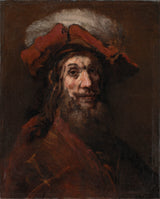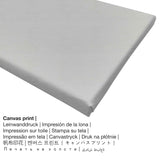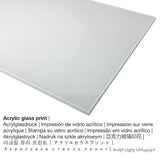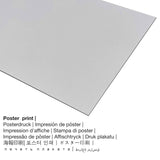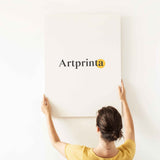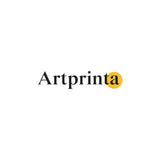Rembrandt van Rijn, 1661 - The Crusader - ọmarịcha nka
Ụtụ gụnyere. Mbupu gbakọrọ na ndenye ọpụpụ.
Ngwaahịa nka mara mma nkeonwe gị
The nka ochie artpiece named "The Crusader" was made by the Baroque nwe- Rembrandt van Rijn na 1661. The 350 year old version of the work of art was made with the size 55,5 x 68,5 cm. Mmanụ na kwaaji was used by the European painter as the technique for the painting. Today, this work of art is included in the Statens Museum maka Kunst (National Gallery nke Denmark)'s nchịkọta. Site n'ikike nke National Gallery nke Denmark (ikike ngalaba ọha).Ezigbo nka nka bụ: . Ọzọkwa, alignment bụ Eserese ma nwee oke nke 1: 1.2, nke pụtara na ogologo bụ 20% mkpụmkpụ karịa obosara. Rembrandt van Rijn was a painter from the Netherlands, whose art style was mainly Baroque. The Baroque painter lived for 63 afọ, born in the year 1606 in Leiden and passed away in 1669.
Nkọwapụta nka site na webụsaịtị ihe ngosi nka (© - Statens Museum for Kunst (National Gallery of Denmark) - Statens Museum maka Kunst (National Gallery nke Denmark))
Sketch for The Knight with the Falcon, known as "The Crusader"
Surrounded by darkness, a face lights up the canvas. The sitter may simply have been a random person whom Rembrandt met in the streets of Amsterdam, inviting him back to his studio to model.
Shades of light The face is a study in light. Rembrandt used a five-step process to paint all the shades of light. Each step involves its own distinctive colours and brushstrokes. The source of light is not accounted for. More than anything the face seems to be lit from within.
An ascetic saint Indeed, the sketch is a preliminary study for the painting Saint Bavo, now housed at the museum in Gothenburg. Saint Bavo is a character known from Dutch medieval narratives; he was canonised due to his ascetic, altruistic way of life. Rembrandt only painted the face and hair; the cloak with a crusader’s emblem is a later addition.
Tebụl ihe osise
| Aha nka nka: | "The Crusader" |
| Nhazi nka nka: | sere |
| Category: | nka ochie |
| Narị afọ nka: | 17th narị afọ |
| Year: | 1661 |
| Ogologo afọ nka nka: | gbara afọ 350 |
| Usoro izizi: | mmanụ na kwaaji |
| Nha izizi: | 55,5 x 68,5 cm |
| Egosiputara na: | Statens Museum maka Kunst (National Gallery nke Denmark) |
| Ebe ngosi nka: | Copenhagen, Denmark |
| website: | Statens Museum maka Kunst (National Gallery nke Denmark) |
| Ikikere nke ihe osise: | ngalaba ọha |
| Site n'aka: | National Gallery nke Denmark |
Onye na-ese ihe
| Aha onye nka: | Rembrandt van Rijn |
| okike nke onye nka: | nwoke |
| Nationality: | Dutch |
| Ọrụ: | onye na-ese ihe |
| Country: | mba netherland |
| Nkewa onye nka: | nna ukwu ochie |
| Ụdị nka: | Baroque |
| Nwụrụ anwụ: | 63 afọ |
| Afọ ọmụmụ: | 1606 |
| Amụrụ na (ebe): | Leiden |
| Nwuru: | 1669 |
| Nwụrụ na (ebe): | Amsterdam |
Ngwa ngwaahịa dị
Maka mbipụta nka ọ bụla dị mma anyị na-enye nha na ihe dị iche iche. Nhọrọ ndị a dị maka n'otu n'otu:
- Ihe odide acrylic glass: A glossy acrylic glass print, which is often denoted as a UV print on plexiglass, transforms your chosen original artwork into décor and makes a good alternative to canvas and dibond fine art prints.
- Mbipụta aluminom (aluminium dibbond): Aluminium Dibond prints are metal prints with a true effect of depth. For your Aluminium Dibond option, we print your selected artwork on the aluminium white-primed surface. The print on aluminium is the most popular entry-level product and is a sophisticated way to showcase art, since it puts all of the viewer’s attention on the replica of the artwork.
- Mbipụta akwụkwọ mmado (ihe kwaaji): The Artprinta poster is a printed sheet of canvas paper with a slightly roughened texture on the surface, which resembles the actual artwork. Please bear in mind, that depending on the absolute size of the poster print we add a white margin of something between 2-6cm round about the painting in order to facilitate the framing.
- Mbipụta kanvas: The canvas print is a printed cotton canvas stretched on a wood frame. How can I hang a canvas print on the wall? Canvas Prints have the great advantage of being low in weight. That means, it is quite simple to hang up the Canvas print without the use of additional wall-mounts. Hence, a canvas print is suited for any kind of wall.
Banyere ihe
| Nkewa ngwaahịa: | ọmarịcha nka |
| Usoro mmeputakwa: | dijitalụ mmeputakwa |
| Usoro mmepụta: | UV kpọmkwem obibi |
| Mmalite ngwaahịa: | emere na Germany |
| Stockdị ngwaahịa: | mmepụta ihe na-achọ |
| Eji ngwaahịa a chọrọ: | ihe ndozi mgbidi, gallery mmeputakwa nka |
| Nhazi onyonyo: | nhazi ihe osise |
| Oke akụkụ: | 1: 1.2 |
| Oke akụkụ pụtara: | ogologo bụ 20% mkpụmkpụ karịa obosara |
| Ụdị dị iche iche dị: | Mbipụta kwaaji, mbipụta enyo acrylic (nwere ezigbo mkpuchi iko), mbipụta akwụkwọ mmado (akwụkwọ kwaaji), mbipụta ọla (aluminium dibbond) |
| Mpempe akwa akwa (akwa akwa na etiti ihe ndọtị) nha: | 50x60cm - 20x24", 100x120cm - 39x47", 150x180cm - 59x71" |
| Mbipụta iko acrylic (nke nwere ezigbo mkpuchi iko): | 50x60cm - 20x24", 100x120cm - 39x47", 150x180cm - 59x71" |
| Ụdị akwụkwọ mmado (akwụkwọ kwaaji) dị iche iche: | 50x60cm - 20x24", 100x120cm - 39x47" |
| Nhọrọ ebipụta aluminom: | 50x60cm - 20x24", 100x120cm - 39x47" |
| Nhazi mbipụta nka: | enweghị etiti |
Ihe dị mkpa: We do everything in order to depict the art products with as many details as possible and to exhibit them visually. However, the tone of the print products and the imprint might differ slightly from the representation on your device's monitor. Depending on the screen settings and the quality of the surface, not all color pigments are printed one hundret percent realistically. Since all our art prints are printed and processed by hand, there may as well be slight variations in the exact position and the size of the motif.
Nwebiisinka © | www.artprinta.com (Artprinta)

